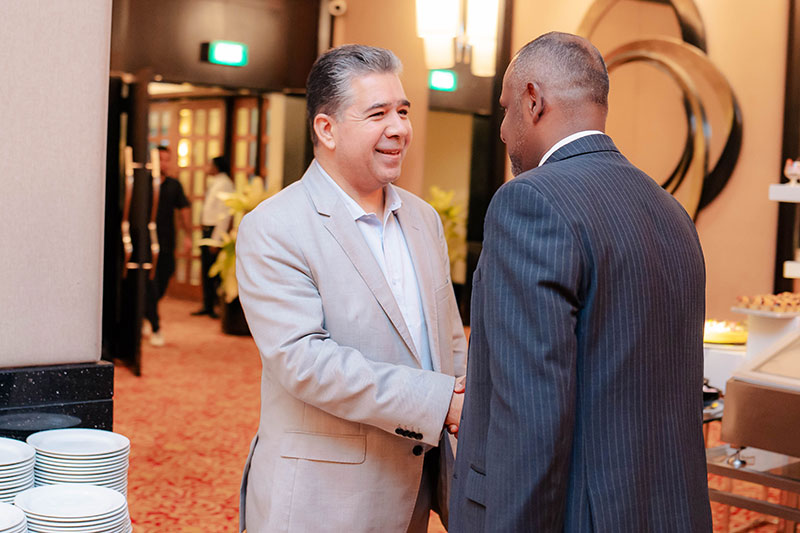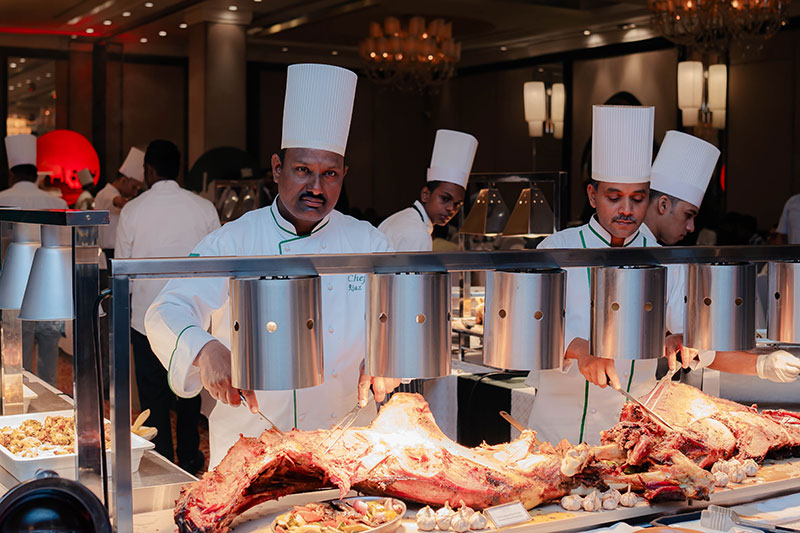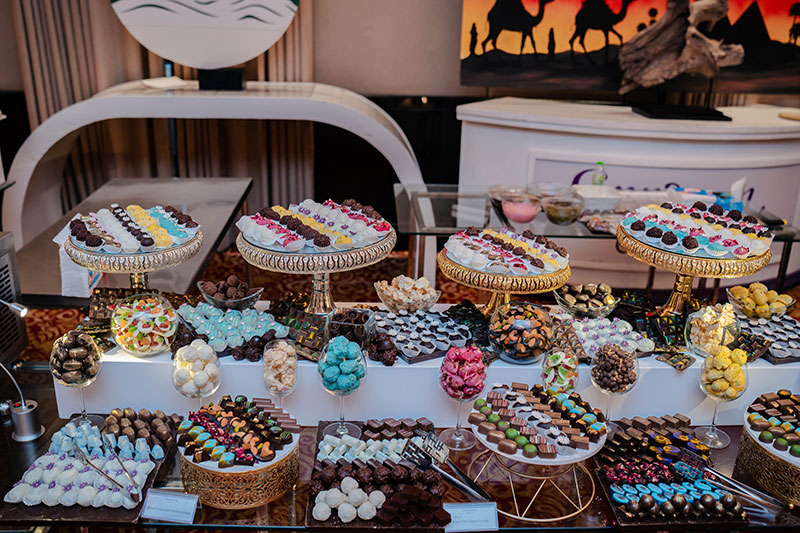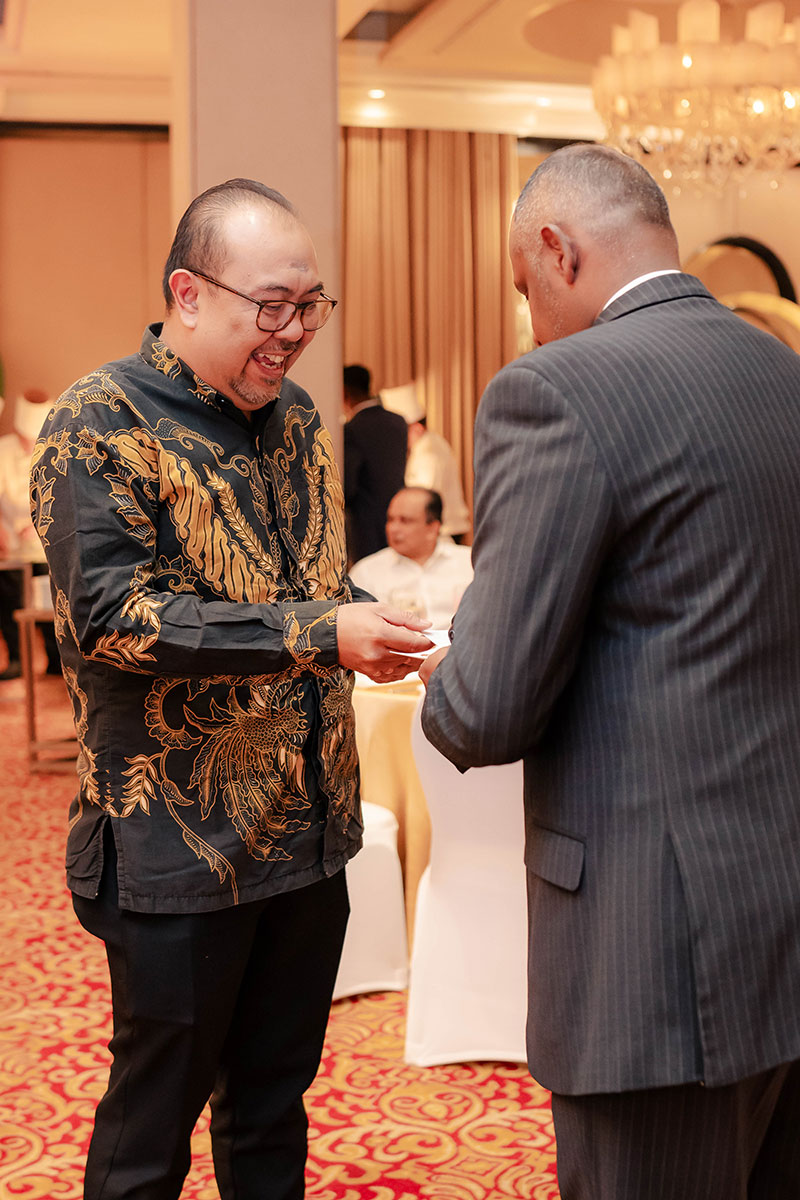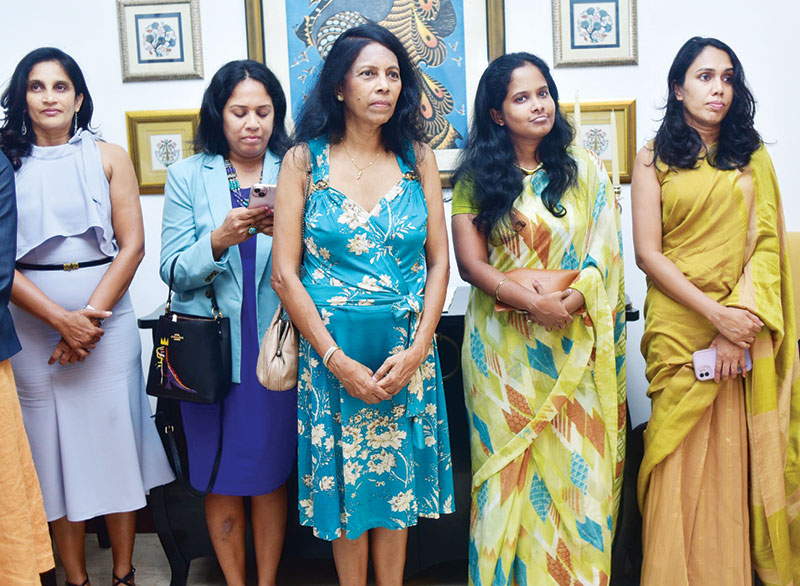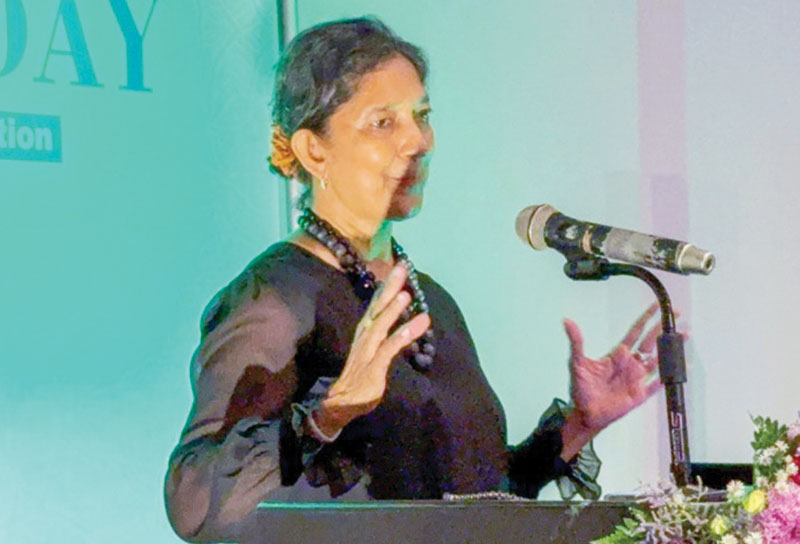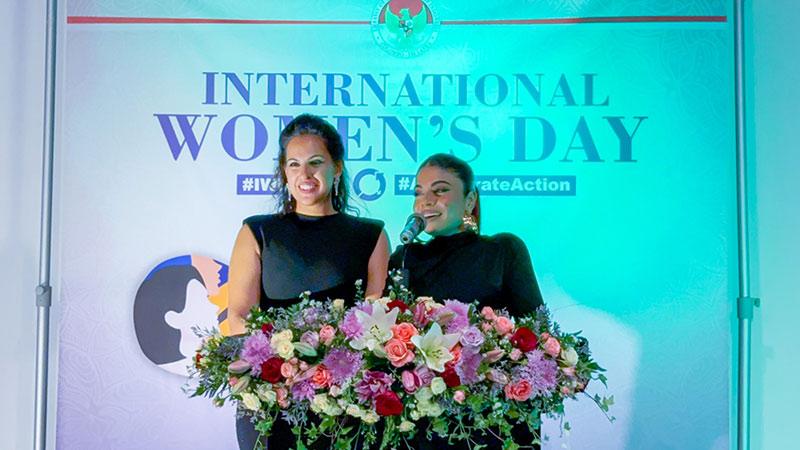Life style
Purest food on earth?
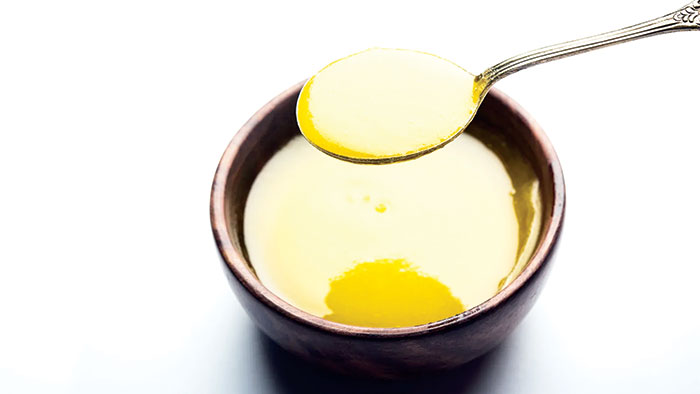
Ghee had fallen out of favour as saturated fats were considered unhealthy. But now, Indians are finding their way back to this ingredient that’s so integral to their cuisine.
Indian food author Kalyan Karmakar is making up for lost time. Today, he enjoys the subtle touch of ghee in many of his favourite Bengali dishes, adding it to steamed rice with fried kaatla fish (Indian carp) for ghee bhaat, and swirling it into phyaana bhaat, a one-pot rice dish cooked with its own starch, mashed potato and a boiled egg. Even his khichuri (also spelled khichdi), a comforting rice and lentil porridge Karmakar associates with rainy days, is incomplete without the ubiquitous fat.
But it wasn’t always like this.
“I belong to the set of people who grew up under the impression that ghee is unhealthy and [I am] now making up for it,” he said, “It’s [essentially] the purest food on Earth.”
For millennia, ghee has been a venerated staple of the subcontinental diet, but it fell out of favour a few decades ago when saturated fats were largely considered to be unhealthy. But more recently, as the thinking around saturated fats is shifting globally, Indians are finding their own way back to this ingredient that’s so integral to their cuisine.
For Karmakar, a renewed interest in ghee is emblematic of a return-to-basics movement in India, which was years in the making but fast-tracked during the pandemic, when “people started being more mindful about their food”, he explained. This movement is also part of an overall trend towards “slow food”. In keeping with the movement’s philosophy, ghee can be produced locally (even at home) and has inextricable cultural ties.
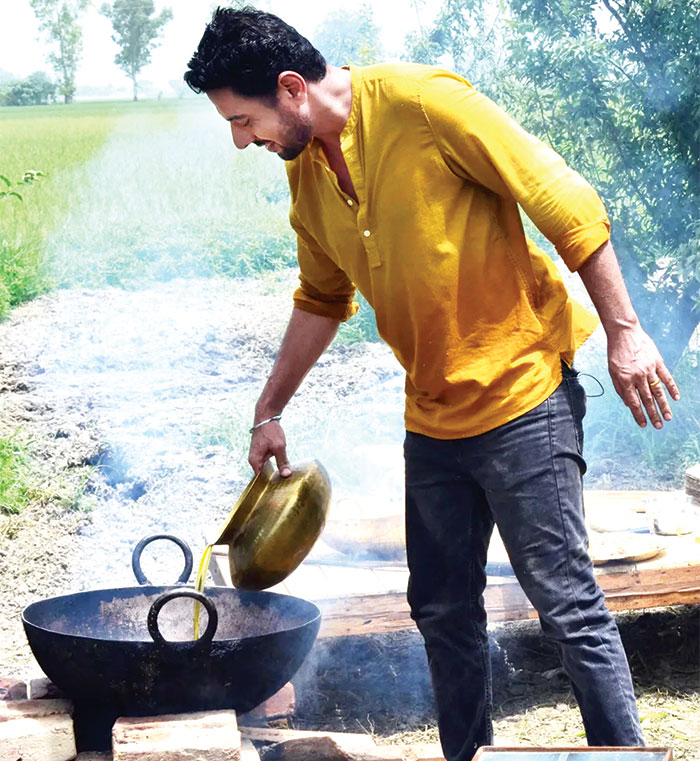
Making ghee is a labour of love for Nitin Ahir, co-founder of GirOrganic, a dairy farm and ghee producer in the city of Surat in the west Indian state of Gujarat. Instead of using imported cow breeds like Jersey, Holstein and Friesian like mass producers do, he gets his milk from his herd of Gir cows, an Indian-born breed native to the Gir hills and forests of the Kathiawar Peninsula. He allows his cows to graze openly on grass and makes sure that calves have their rightful first share of their mothers’ milk before milking.
His A2 ghee, a type of ghee that is considered nutritionally superior, is made via the “bilona method” in which a small motor-operated machine moves clockwise and anti-clockwise mimicking the traditional motion of a handheld wooden churner, a process that he admits “isn’t the most cost-effective and resists large scale production”. Nevertheless, he estimates he’s witnessed a 25-30% increase in demand for his ghee since the pandemic began.
At a basic level, ghee is a type of clarified butter believed to have originated in India as a way to preserve butter from going rancid in the hot climate. Churned cream or butter is simmered slowly until the moisture evaporates and any browned milk solids are removed, resulting in a sumptuously rich, fragrant and nutty fat.For many Indians, however, ghee is historically something more sacred than just a cooking fat.
“Ghee is the final and purest form of milk – the last extract,” said author and food historian Pritha Sen. “It was considered the purest offering to the gods and the medium by which prayers were carried to the heavens.”
Its history dates back millennia. “Paeans to ghee are found in the Rig Veda, a collection of ancient hymns and prayers dating back nearly 4,000 years,” explained Colleen Taylor Sen, a Chicago-based food historian and author of Feasts and Fasts: A History of Food in India. “According to legend, Prajapati, lord of the creatures, rubbed his hands together to create the first ghee, which he poured into flames to create his children.”
Ghee is also deeply woven into the fabric of Indian culture. Traditionally, Hindus pour ghee into fire at marriages, funerals and other ceremonies as it is believed to be auspicious. In Ayurveda, a traditional Indian system of medicine, Ghee is considered a virtual panacea. And its wholesome qualities have been embraced by generations of mothers and grandmothers.
For US-based food author Sandeepa Mukherjee Datta, who runs Bong Mom’s Cookbook, choosing ghee when it was time to introduce fat and oil to her babies was a no-brainer. “[It’s] good fat, to give the young bones and brain nourishment and vitamins,” she said.
Her mother took things a step further, insisting on nothing but homemade ghee. “She would make small jars of ghee and send it for her granddaughters with anyone who was flying across the Atlantic,” said Datta. “That ghee was pure and tasted like a gift from heaven.”
“That ghee was pure and tasted like a gift from heaven.”

“Ghee is not only a medium to cook and fry food,” said Datta. “Before the advent of fancy cereals and oats, every Bengali child was unified by the same breakfast dish on school mornings.” The dish, ghee-alu sheddho-bhaat (ghee-mashed potatoes-rice), she explained, is almost Bengal’s unofficial state food. “In those days, before carbs and fat got a bad rap, mothers felt this dish was the right balance to fortify their children throughout the day.”
That “bad rap” – due to claims that saturated fats are bad for heart health – affected ghee, which has up to 50-70% saturated fat. For a few decades, consuming ghee fell out of favour in India. In the 1980s, vegetable oils were heavily promoted by the industry, and as vegetable oil consumption went up, ghee consumption went down. “The advertising would really shake you up,” he said. “The urban and Western exposed population began looking down on traditional oils and using the vegetable oil.”
With time, the neutral flavour of refined vegetable oil became the norm – and ghee the exception.
“The whole fat conversation from the 1980s onwards was out to make saturated fats [the villain] – fortunately, we understand the fat and cholesterol space better now,” said celebrity chef Ranveer Brar, an author, restaurateur and MasterChef India judge.
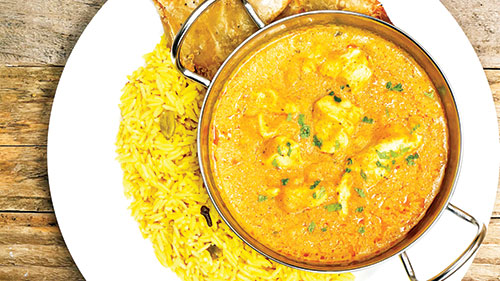
While experts still advise against a high-fat diet, some have begun to mellow their stance on the overall risks of saturated fat. And thanks partly to the high fat keto diet craze, ghee’s popularity has soared in countries like the US.
However, the West’s newfound interest in ghee may be somewhat misguided. For one thing, much is made of ghee’s high smoke point, which passionate advocates extoll for its ability to withstand higher temperatures than butter. But according to Brar, the objective of cooking with ghee “isn’t to get to smoking temperature in the first place; [it’s] just to a point of extracting the flavours.”
Furthermore, in India, ghee is not consumed in copious amounts for a quick-fix or to help stick to lower carb macros (due to the fat’s satiating effect). Instead, the traditional approach to ghee is one of moderation, harmony and grace. Here, the pale yellow, crumbly fat isn’t just blitzed into coffee; it stars as a final touch to dishes, moving slowly as small dollops of it are transformed by heat into a molten gold liquid, settling into every mouthful.
So how is ghee best used? Brar recommends using ghee with lentils or in dishes with pronounced lactic notes, such as yoghourt-based curries, like korma. “Start with a light smear on your soups in winter, on your pita or flatbread. [Then] you can use it for marinating and tempering. [Eventually], it becomes an essential part of the [overall] bouquet that you inhale,” Brar said.
Chef Manish Mehrotra, culinary director of Indian Accent restaurants and part of the Old World Hospitality group for the past 22 years, said it was important to him when setting a menu to include recipes paying homage to the unique flavour of ghee. He is confident the world is coming to understand his country’s cuisine and recognise its “authentic” tastes. One of Mehrotra’s signature dishes is ghee roast mutton boti (savoury chunks of flavourful meat), “The ghee imparts this smoky-sweet flavour. It’s one of our best-sellers,” he said.
Chef Nikita Rao of Mumbai’s Ekaa restaurant believes in celebrating the distinctive nature of each ingredient. “It’s ingredient-driven fine-dining,” she said. With such concerted focus on the food itself, she explained how the ethos behind using ghee in a recipe is allowing it to assimilate and let other components sing. Her Morning Glory salad with tamarind dressing, for instance, is topped with homemade creme fraiche and a tempering of ghee, curry leaves and fiery resham patti chillies. “The tempering is less than 10% of the entire salad, but people absolutely love it, and buffalo ghee complements the entire dish.”
Ultimately, understanding ghee means understanding a collective Indian identity, an approach to food that is cohesive, holistic and balanced – and one where ghee isn’t a piecemeal part or overpowering presence. And when ghee is understood for its true essence, good things are sure to follow.
Brar always has ghee within arm’s distance of his stovetop. As he said, “I’ve grown up with my grandma’s chunni [scarf or stole] and the whole house smelling of ghee. When I reach for ghee, I’m searching for more than just a fat. I’m reaching out for my childhood.” – BBC
Life style
Celebration of unity and tradition at Iftar dinner
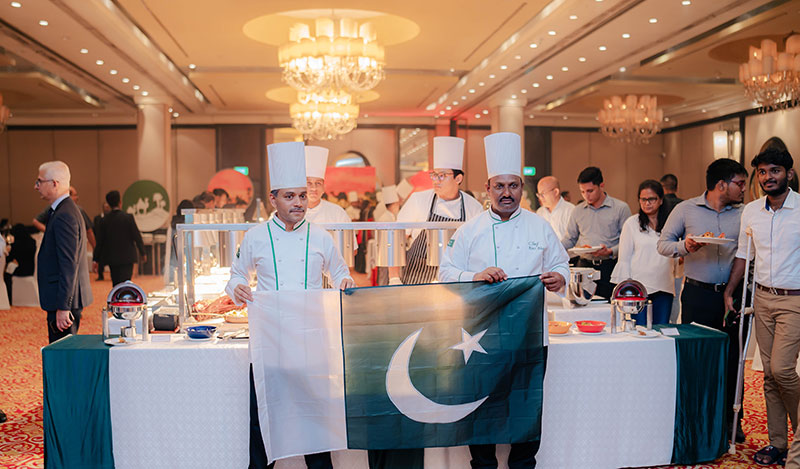
In a grand celebration of unity and tradition, Cinnamon Lakeside Colombo hosted an exclusive and elegant Iftar dinner at the prestigious King’s Court. This remarkable evening, hosted by Nazoomi Azhar, General Manager of Cinnamon Lakeside Colombo, brought together a distinguished gathering of ambassadors, key figures, top corporate executives, and esteemed members of the media.
The event showcased a spectacular array of culinary delights, with a highlight being the masterpieces crafted by renowned Pakistani Chef Riaz Bhatti. His exquisite creations, alongside an extensive selection of traditional and contemporary delicacies of Pakistani dishes, left guests in awe of the lavish spread and exceptional flavors.
Among the standout dishes of the evening were the rich and aromatic Mutton Raghni Josh, the flavorful Mutton Shahi Qorma, and the perfectly spiced Peshawari Beef Chapli Kabab. Guests also delighted in the Lahori Chicken Tikka Boti and the indulgent Chicken Peshawari Karahi, which added a taste of authenticity to the menu. The Iftar spread was further complemented by traditional desserts such as Gulab Jamun, Shahi Tukda, and Ras Malai, providing a sweet ending to the feast.
The atmosphere was one of warmth and hospitality, reflecting the spirit of Ramadan while offering a truly memorable experience. Guests were highly impressed with the impeccable service and the thoughtfully curated menu, making this Iftar dinner a standout occasion in Colombo’s social calendar.
Cinnamon Lakeside Colombo, under the leadership of Nazoomi Azhar, continues to set the benchmark for luxury hospitality, delivering unforgettable experiences through its commitment to excellence.
Life style
Women -building blocks in shaping history of Turkiye
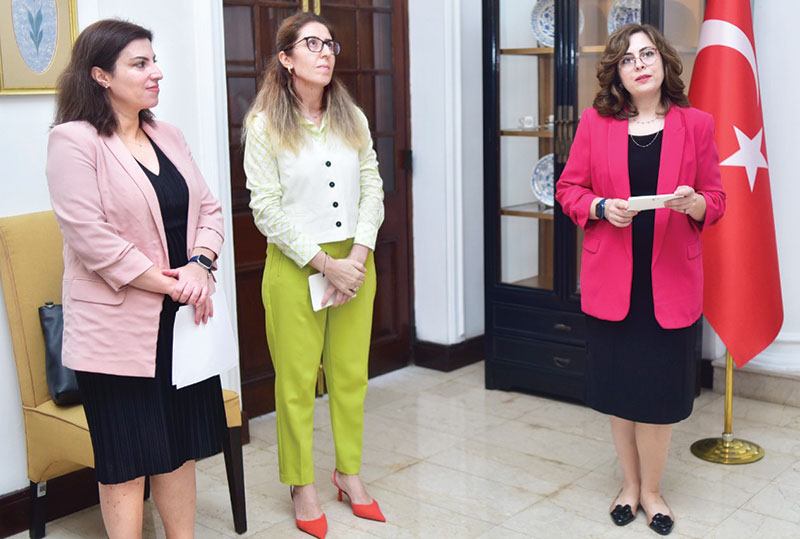
 In the Republic of Turkiye women have been one of the building blocks in shaping Turkiye for centuries. However, especially since the founding of the Republic, Turkiye has been one of the leading countries in the world, especially in terms of the political visibility of women. Women were given the right to vote long before women were given political rights in many democratic and modern countries.
In the Republic of Turkiye women have been one of the building blocks in shaping Turkiye for centuries. However, especially since the founding of the Republic, Turkiye has been one of the leading countries in the world, especially in terms of the political visibility of women. Women were given the right to vote long before women were given political rights in many democratic and modern countries.
Turkish women are known for their unwavering determination and resilience. They exhibit remarkable dedication and courage in pursuing their goals and challenge injustice. Their hard work and perseverence contribute to their advancement of society. These statements were expressed by the Deputy Chief of Mission of Turkiye M/S Merve Goozde Otlu at the residence of the Turkish Ambassador in Sri Lanka, on the occasion of the International Women’s Day.
This day is also important for Turkish women, who have played a vital role in shaping Turkish society, from the early days of our Republic to the present said the Deputy Chief of Mission. In her speech she also pointed out that the founder of the Republic, Mustafia Kemal Ataturk, has an important place in the hearts of all Turkish people, but his visionary leadership for women’s rights are especially precious for all women of Turkiye.
She explained “Ataturk strongly believed in women’s equality and emphasized that a modern and progressive society could only be achieved if women had equal opportunities as men’’
“Women were encouraged to participate in all areas of life, including education, work life and politics. One of the most remarkable steps Ataturk took was granting women the right to vote and as early as 1930, women were able to run for office at the local elections and in 1934 women were granted this right long before many other countries (One year after that, there were already 18 women MPs). When we look at Turkish history, we see countless inspiring women who have shaped our country, playing crucial roles achieving many milestones. These women have proved that Turkish women could achieve greatness in any field from science to business, from arts to sports, if given the opportunity, she remarked.
Turkish women have also made a significant contribution to diplomacy, a field often seen as male-dominated, she remarked.
For decades, Turkish women have been representing our country with strength and determination on the global stage. The first woman diplomat Mrs. Adile Ayda was recruited in 1932, while Ambassador Filiz Dinemen is the first woman Ambassador of Turkiye, assigned to the Hague in 1982.
Women representation has been increasing in the Ministry of Foreign Affairs, constituting almost 40% of the Ministry.
It is a personal honour for me to serve in a country like Sri Lanka, which gave the world the first female Prime Minister in history, Sirimavo Bandaranaike, she said with pride.
Her leadership showed that women can take on the highest responsibility and be a driving force not just for women but for the whole society.
The contribution of women in Turkiye in the field of Science and Technology is far reaching. She said in Turkiye, a prominent scientist who worked for NASA, whose research was instrumental in the legendary 1962 Apollo mission. She is Dihlhan Eryunt, was the recipient of the NASA Appolo Achievement Awards she said with pride.
The First Secretary, Imren Kaygisiz said Turkish women who have contributed to the development of the country and thier enduring impact on society who are still continuing to inspire strength,resilience and success of women
The Commercial Counsellor M/s Gamze Erc an also paid tribute to the founder of Modern Republic of Turkiye, Mustafa Kemal Ataturk who gave importance to education of Turkish women and leader believed that development of a nation depends on a strong education foundation.
The evening had all the trappings of glamour followed by high tea.
Life style
Sri Lanka showing strong commitment to gender equality
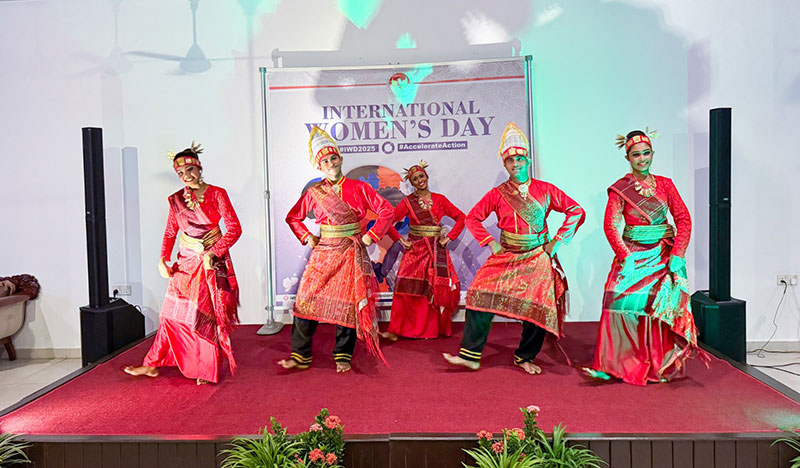
The Embassy of the Republic of Indonesia in sri Lanka hosted the International Women’s Day ceremony at thier residence.
Ambassador of Indonesia Dwi Gustina Tobing invited a large gathering of invitees including the Minister of Women and Child Affairs Saroja Savithri Paulraj who was the Chief Guest. CBL Group Managing Director Sheamalee Wickramasighe, popular musician Umaria Sinhawansa and Stephanie Siriwardena also addressed the gathering. The ambassador looking elegant was busy welcoming the guests at her residence.
An evening of camaraderie, glitz and glamour. The event featured an insightful session aimed to empower women, and served as a tribute to the commitment of women who has contributed immensely. The ambassador in her speech said by celebrating the achievements of women and amplifying their voices, we pave the way for a more inclusive and equitable society, where gender does not hinder opportunity but enriches collective experiences. Here is an excerpt from the ambassador’s speech.
A warm welcome to all of you. It is an honour to host this reception in commemoration of International Women’s Day 2025.
She said ” This year’s theme, “Accelerate Action”, is a powerful call to all of us. It underscores that equality cannot wait, and that all sectors of society must work together to speed up progress in women’s rights and empowerment.”
- CBL group managing director Sheamalee addressing the gathering
- Stephani and Umaria
Around the world, we have seen tremendous strides toward gender equality in politics, economics, and social spheres. Women are increasingly taking up leadership roles, contributing to economic growth, and shaping the future of our societies.
In Indonesia, we are proud of the progress we have made in advancing women’s participation. She said
She reiterated that 127 women were elected to parliament, making up 22.1% of the seats—the highest in our post-reform history. However, this is still below our target of 30%, which means there is room for improvement.
Our new cabinet includes 14 women, both as ministers and deputy ministers, demonstrating our commitment to gender-inclusive governance.
Beyond politics, women are the backbone of Indonesia’s economy. Micro, Small, and Medium Enterprises (MSMEs) contribute over 60% to the national GDP, and 64.5% of these businesses are managed by women.
Additionally, Indonesia ranks among the top four countries globally for female business leaders
She pointed out Sri Lanka, too, has made significant strides in women’s empowerment. When I met with Minister Saroja Savithri Paulraj last week, we discussed the progress Sri Lanka has made in increasing women’s representation in politics and the economy. From women entrepreneurs driving economic growth to initiatives supporting women in leadership, Sri Lanka is showing a strong commitment to gender equality.
Many countries have made progress in advancing women’s empowerment, yet, despite this progress, we must recognize that challenges remain. Women still face barriers to equal pay, leadership opportunities, financial inclusion, and social mobility. Gender-based violence, discrimination, and unequal access to resources continue to hinder the advancement of women in many parts of the world.
This is why collaboration is crucial. By sharing experiences, policies, and best practices, we can accelerate meaningful action to bridge the gender gap.
We must continue working together, fostering partnerships that empower women economically and socially. Indonesia is committed to strengthening collaboration with Sri Lanka and other nations to create more opportunities for women, recognizing their immense importance. Invitees were able to enjoy authentic Indonesian delicacies specially curated by the Ambassador herself.
By Zanita Careem
-
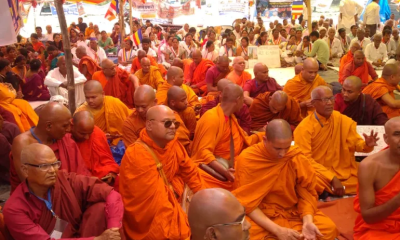
 Foreign News6 days ago
Foreign News6 days agoBuddhism’s holiest site erupts in protests over Hindu ‘control’ of shrine
-

 Features5 days ago
Features5 days agoCelebrating 25 Years of Excellence: The Silver Jubilee of SLIIT – PART I
-

 Editorial7 days ago
Editorial7 days agoWhen tractors become cars!
-

 Business3 days ago
Business3 days agoAIA Higher Education Scholarships Programme celebrating 30-year journey
-

 Business5 days ago
Business5 days agoCEB calls for proposals to develop two 50MW wind farm facilities in Mullikulam
-

 Features5 days ago
Features5 days agoNotes from AKD’s Textbook
-

 News2 days ago
News2 days agoGnanasara Thera urged to reveal masterminds behind Easter Sunday terror attacks
-
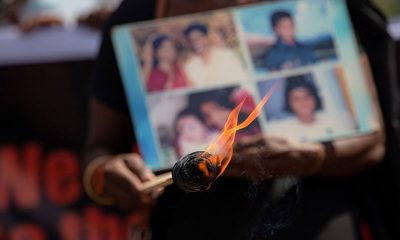
 Features7 days ago
Features7 days agoPolitics of Enforced Disappearances in Sri Lanka




